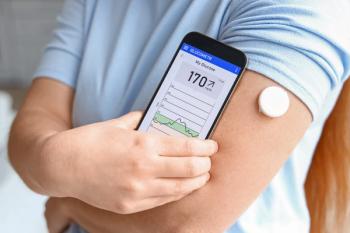In the evolving landscape of health care, pharmacists are increasingly being recognized not just as dispensers of medication but as vital health advocates. One of the most impactful, yet often overlooked, ways pharmacists contribute to patient safety and public health is through comprehensive medication reviews.
“Do you know what each of your prescriptions is for?” “Are you taking your medications as directed?” “Do you have access to reliable transportation to your pharmacy?”
These are common questions in our profession as pharmacists. These simple questions can make a significant difference in identifying and addressing care gaps, enhancing medication adherence, and improving the overall health of our patients. As pharmacists, we are key players on a patient’s health care team, advocating for safer, smarter medication use.
The Centers for Disease Control and Prevention (CDC) reports that nearly 70% of adults aged 40 to 79 years say they have used at least 1 prescription medication in the past 30 days. And in the past 30 days, more than 22% report using 5 or more medications, a concept known as polypharmacy.1 Polypharmacy can significantly raise the risk of adverse drug events and medication errors. In addition to prescribed medications, we know many people also take over-the-counter drugs, vitamins, or supplements, often without disclosing these to their health care provider.
To make matters more complex, approximately 41% of patients in the US use more than 1 pharmacy, increasing the likelihood of uncoordinated care and missed drug interactions.2
The risks are real: nonadherence alone is estimated to cause 125,000 deaths annually and costs the US health care system nearly $300 billion in avoidable expenses. It also accounts for about 10% of hospitalizations.3
A medication review is more than a safety check. It is a clinical service that enables pharmacists to identify potential drug interactions, streamline therapies, recommend discontinuation of expired or unnecessary medications, and find cost-saving alternatives. Most importantly, it allows pharmacists to engage patients in conversations that improve their understanding, adherence, and safety.
For health care leaders, investing in pharmacist-led medication reviews is not just a clinical best practice; it is a strategic imperative to improve patient outcomes, reduce avoidable costs, and strengthen the safety net across the continuum of care, particularly for patients with multiple chronic conditions.
About The Author
Lisa Morris, RPh, vice president and chief clinical officer at CarelonRx, leads the development and execution of clinical and specialty pharmacy benefit management strategies—driving quality, cost management, and drug utilization programs across commercial, Medicaid, and Medicare lines of business.
Pharmacists are uniquely positioned to identify care gaps through medication reviews, as they are among the most accessible health care professionals.4 In fact, about 90% of Americans live within 5 miles of a pharmacy.5 For those receiving pharmacy benefits, pharmacists such as CarelonRx are just a phone call away, expanding access even further. That accessibility can, and should, translate into action. Whether practicing in a community pharmacy, health system, or pharmacy benefits management organization, we must continue to include and support pharmacists as key leaders in optimizing medication therapy and improving health outcomes in our communities.
National Check Your Meds Day, observed on October 21, serves as an important annual reminder of the value of pharmacist-led interventions. Every patient interaction is an opportunity to initiate a conversation that could prevent hospitalization, reduce costs, or even save a life.
Are you ready to elevate your pharmacy practice? Sign up today for our free Drug Topics newsletter and get the latest drug information, industry trends, and patient care tips straight to your inbox.
REFERENCES
1. Prescription Drug Use Among Adults Aged 40-79 in the United States and Canada. National Center for Health Statistics; 2019. NCHS Data Brief No. 347, August 2019. Accessed October 7, 2025. https://www.cdc.gov/nchs/products/databriefs/db347.htm
2. Look KA. Patient characteristics associated with multiple pharmacy use in the U.S. population: findings from the medical expenditure panel survey. Res Social Adm Pharm. 2015;11(4):507-516. doi:10.1016/j.sapharm.2014.10.004
3. Pittman T. Medication nonadherence increases health costs, hospital readmissions. Duke Health. November 20, 2018. Accessed November 3, 2025. https://physicians.dukehealth.org/articles/medication-nonadherence-increases-health-costs-hospital-readmissions?utm_source
4. Valliant SN, Burbage SC, Pathak S, Urick BY. Pharmacists as accessible health care providers: quantifying the opportunity. J Manag Care Spec Pharm. 2022;28(1):85-90. doi:10.18553/jmcp.2022.28.1.85
5. Berenbrok LA, Tang S, Gabriel N, et al. Access to community pharmacies: a nationwide geographic information systems cross-sectional analysis. J Am Pharm Assoc (2003). 2022;62(6):1816-1822.e2. doi:10.1016/j.japh.2022.07.003





































































































































